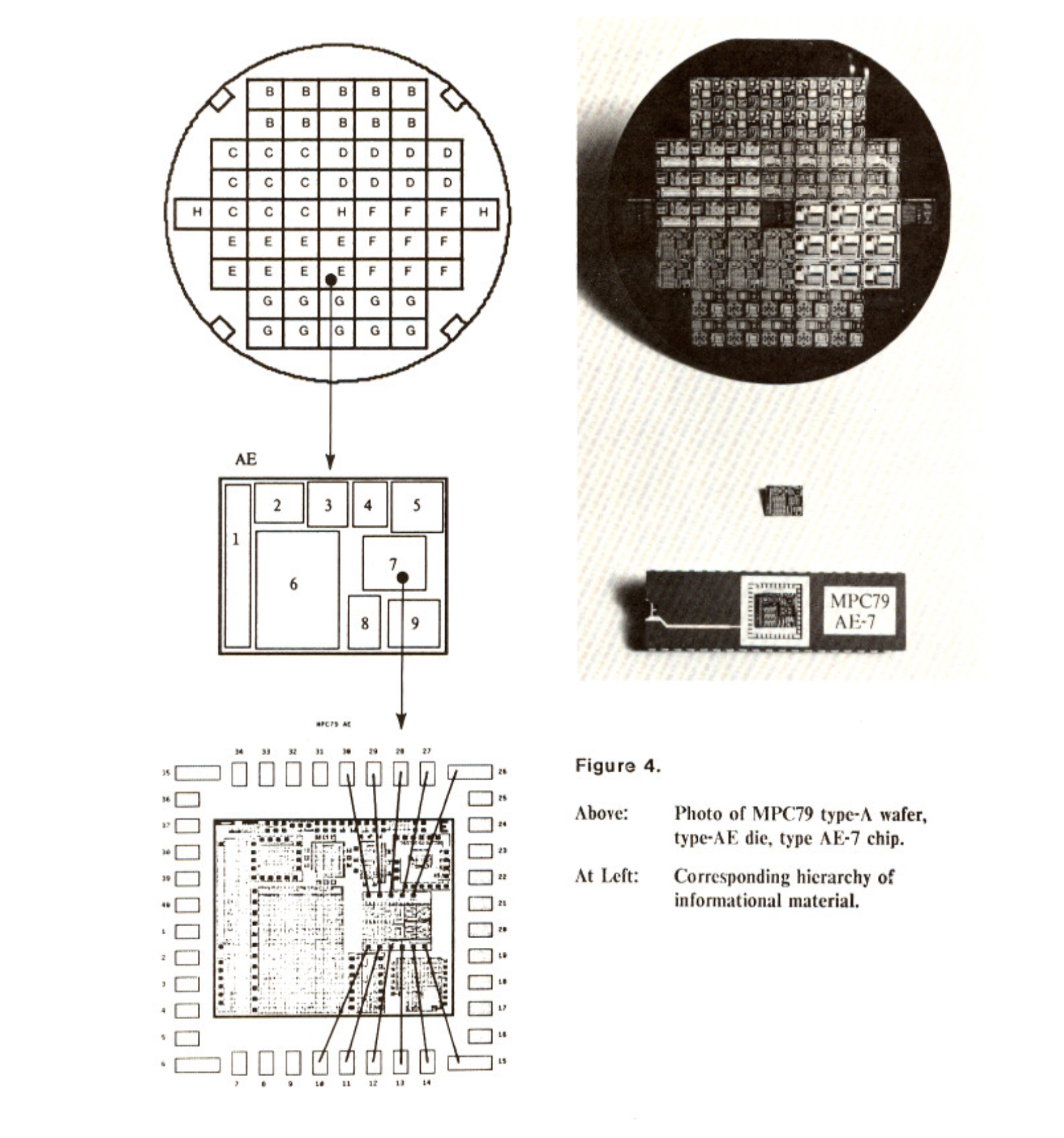Lynn Conway
Lynn Conway passed away today, 6/11/2024.
She is best known for her work on VLSI, (and only recently) for inventing the first superscalar architecture, among many other things.

Above: diagram of a single chip, embedded within a larger layout, on a shared wafer. Among the first of countless billions of VLSI chips to be made
Here, she explains the symbiotic codevelopment of chip design (specifically, VLSI) and ARPANET, the precursor to the internet:
Envision the symbiotic co-evolution of VLSI and the ARPANET. If you take one run through this as sort of one cycle at one node of silicon design, each major iteration of this technosocial system, the VLSI chips embedded in computer workstations and ARPANET routers and servers enabled the design of VLSI chips for more powerful workstations, routers and servers, which you then embed into the next iteration of the game. So the game is re-run using the next node’s VLSI chips. …
The radical results mirrored the synergistic exponentiation of railroads and telegraphy in the 19th century. Do you see how those link? If you look at the charts, they lay right over each other. [1] Maybe some lessons learned.
Some other reflections: back to those design rules, that’s just one level. All the levels were simultaneously restructured. The accumulation of local complexity is akin to hoarding. It continually wastes both human and machine time and energy. Needless complexity should be continuously deconstructed, and its deconstruction should be highly rewarded.
Upon simplification, specialties are more easily cross-visualized, teams can see the forest for the trees, and cross-cutting disruptive innovations are more rapidly made and dissiminated. In all of this, open team competition is a vital form of collaboration. The students in each course are competing. The schools are competing. All of this is open … so that kind of competition makes all the activity visible and helps select innovations that improve the whole game, such as Jim Clark’s [2] chips.
Such techni-social dynamical processes involve humans and their tools within all feedback loops. So importantly, innovation and user experience design, and user experience inclusion, are essential to the empowerment of these systems.
Last but not least, always remember: narrow expertise has a half life. And that half life gets shorter and shorter in times of accelerating technosocial change. As the philosopher Eric Hoffer [3] said, “in a world of change, the learners shall inherit the earth. While the learned shall find themselves perfectly suited for a world that no longer exists.”
Lynn Conway, [4].
Visionary stuff, more true today than in 1979. For another century of technosocial change, we owe you, Lynn.
[1] Railroads and telegraphy had a symbiotic relationship; large railway systems needed a complex, instant signals network; telegraphs provided that network. Large telegraph networks needed extensive geographic routes along which to lay signal wire; railways provided that.
[2] Jim Clark founded Silicon Graphics, a fairly large company which sold workstations with powerful graphics hardware. Also founded a key player in today’s technosocial phenomenon, the web: Netscape. https://en.wikipedia.org/wiki/James_H._Clark
[3] A quote from Eric Hoffer https://en.wikipedia.org/wiki/Eric_Hoffer
[4] Ms. Lynn Conway – University of Michigan, Ann Arbor. https://youtu.be/W_cB8VYunY8?si=Uo7Izv9OefeeuGsP
[6] Image source: https://ai.eecs.umich.edu/people/conway/VLSI/MPCAdv/MPCAdv.pdf